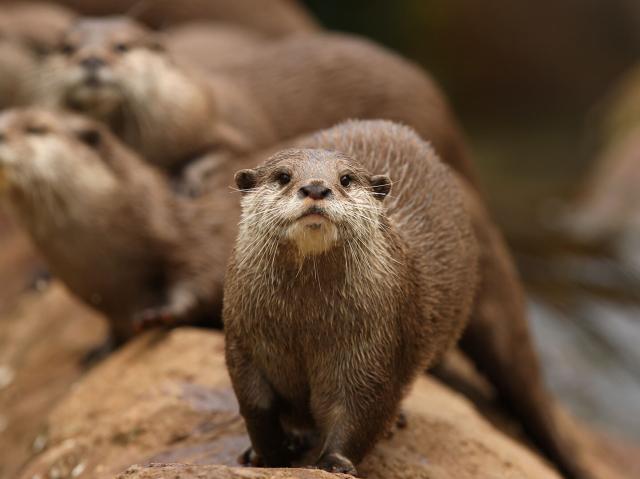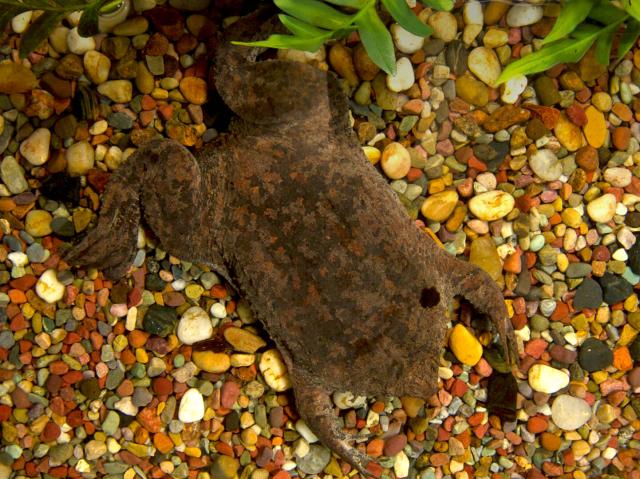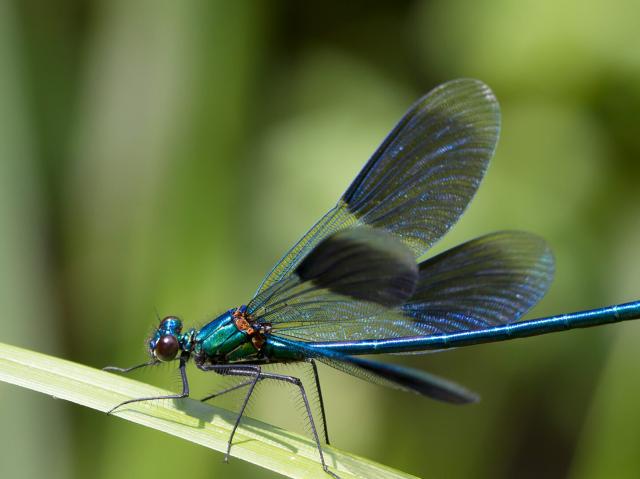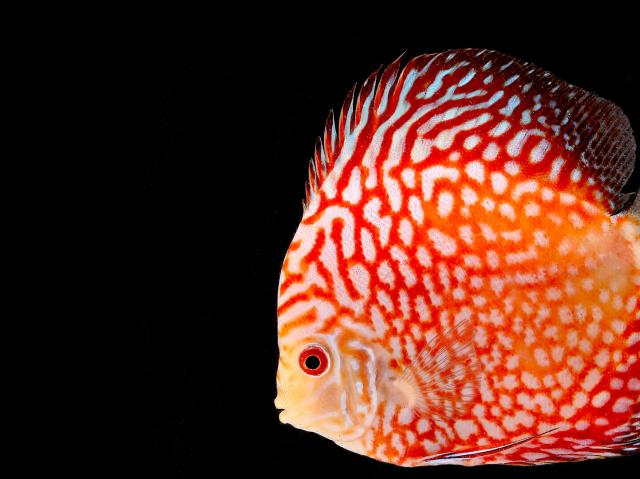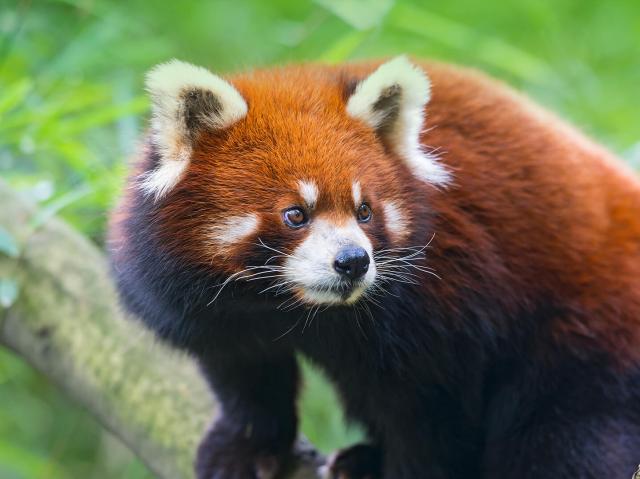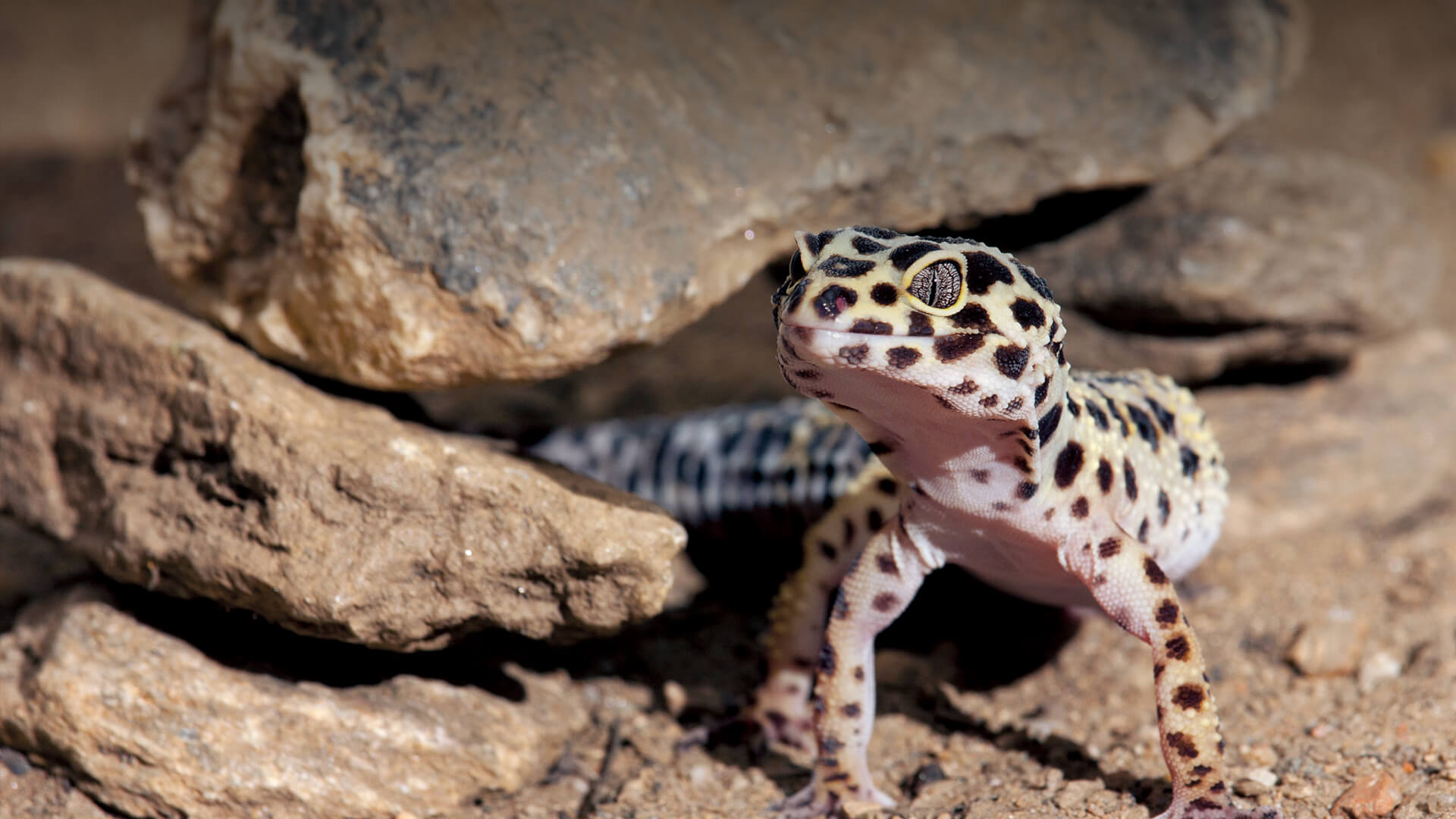
Leopard Gecko

- Class: Reptilia
- Order: Squamata
- Family: Eublepharidae
- Genus: Eublepharis
- Species: macularius

ABOUT
A popular import. Although the leopard gecko E. macularius is native to dry and semi-desert areas in Afghanistan, Iraq, Iran, and northwest India, these hardy little reptiles have been kept and bred as pets for more than 30 years. They are one of the most commonly kept lizards today. Their docile nature and relative ease of care make them popular for home terrariums, as long as their habitat is representative of their native homes.
Easy to spot. The name “leopard gecko” is very appropriate, as the body color is often yellow with irregular black spots, but these charming little reptiles can be found in a variety of colors, patterns, and sizes. In most leopard geckos, the dorsal body is light to dark yellow with black markings, the ventral body is white, and the tail is banded. However, several different color combinations have been produced through selective breeding programs.
The tail is segmented; if part of the tail is lost, it can regenerate, but may not look the same. Juveniles have bands across their bodies. The toes end in a small claw. Because of their moveable eyelids, leopard geckos (unlike some geckos) can close their eyes—and their long tongue can give those eyes a quick lick as needed. The underside of the body is white. In gravid females, the eggs can clearly be seen through the skin. Males are easily recognized by their preanal pores.
HABITAT AND DIET
Not too hot, not too cold… The climate in areas where leopard geckos live is arid and warm to hot for most of the year, but winter temperatures can cool down to 50 degrees Fahrenheit (10 degrees Celsius), driving the geckos underground into semi-hibernation.
The geckos' habitat is rocky, with clay-gravel soil below a layer of sand. They are mostly limited to burrows and shaded areas during the day, becoming more active at dawn and dusk when the temperature is more to their liking.
Laying low. Leopard geckos have to watch out for predators that include foxes, snakes, and other large reptiles. They use their keen senses of hearing and sight to avoid threats; and their skin helps them camouflage themselves in their habitat.
Catch of the day. Leopard geckos dine on crickets, small locusts, waxmoth larvae, mealworms, springtails, grasshoppers, and nesting mice.
Say what? Leopard geckos seem to communicate via chirps when alarmed or annoyed, and clicking when “conversing” among themselves. Their tails also do the talking: slow tail shakes tell other geckos that they have been noticed; fast tail moves by a male mean he’s noticed a female. The tail is said to shake when a gecko is hunting.
FAMILY LIFE
Weigh in. As with most other reptiles, size or weight determines sexual maturity more than age does. Leopard geckos become sexually mature when their weight reaches a little over an ounce (30 grams), at roughly 18 to 24 months of age.
Females produce one to five clutches of two eggs throughout the breeding season. Once the eggs have been laid, they are buried in soft or loose substrate. The temperature of the incubation period in the first two weeks determines the sex of the offspring.
At a temperature of 79 degrees Fahrenheit (26 degrees Celsius), mostly females will be produced; at a range of 85 to 87 degrees Fahrenheit (29 to 31 degrees Celsius) , an equal number of males and females will be produced; and at a temperature of 90 degrees Fahrenheit (32 degrees Celsius), mostly males will be produced. The eggs hatch in 45 to 53 days. During the first week out of the shell, hatchlings live off the yolk from the egg. Like most other reptiles, they do not begin to feed on their own until after their first molt (shedding of skin), which should occur after the first week of hatching.
CONSERVATION
Although this species is stable, some related Eublepharis geckos are threatened or endangered.
If you buy a pet, make sure the gecko you buy hatched in human care, and was not collected from its native habitat.
Size
Size: females are 7.1 to 7.9 inches (18 to 20 centimeters) long; males are 7.9 to 11 inches (20 to 28 centimeters) long
Weight: 1.8 to 2.8 ounces (50 to 80 grams)
Weight at hatch: .07 to .17 ounces (2 to 5 grams)
Life Facts
Incubation: 45–53 days
Number of young: 1 to 2 clutches of two eggs per breeding season
Age of maturity: 18 to 24 months
Fun Facts
Unlike most geckos, all species in the genus Eublepharidae have moveable eyelids.
Leopard geckos cannot climb up smooth surfaces because they do not have toe pads like most geckos.
Leopard geckos shed their skin to prevent their scent from being detected.




